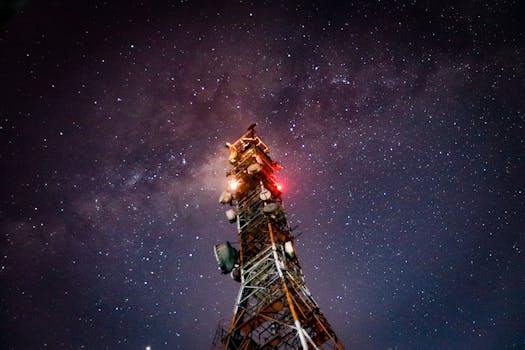
Future of Satellites: How Space Technology is Revolutionizing Global Communication
Future of satellites is an exciting and rapidly evolving field, with advancements in space technology enabling faster and more reliable connections. The future of satellites is transforming the way we communicate globally, and it’s essential to understand the latest developments and trends in this industry. The future of satellites starts with the understanding that satellites have been a crucial part of modern communication systems for decades, providing a means of transmitting data, voice, and video signals over long distances.
However, the role of satellites is expanding beyond traditional communication services, with the emergence of new technologies and applications such as satellite internet, Earth observation, and navigation. The future of satellites is being shaped by factors such as technological advancements, changing market demands, and government policies. One of the key drivers of the future of satellites is the growing demand for high-speed internet access, particularly in remote and underserved areas.
The future of satellites is also being influenced by the increasing use of small satellites, also known as smallsats, which are smaller and less expensive than traditional satellites. Smallsats are being used for a variety of applications, including Earth observation, communication, and scientific research. Another trend shaping the future of satellites is the development of reusable launch vehicles, which are capable of launching multiple satellites into orbit and returning to Earth for refurbishment and reuse.
Advancements in Satellite Technology
There have been significant advancements in satellite technology in recent years, driven by investments in research and development. One of the key areas of advancement is in the development of new satellite constellations, which are networks of satellites working together to provide global coverage. These constellations are being used for a variety of applications, including satellite internet, navigation, and Earth observation.
Another area of advancement is in the development of new satellite technologies, such as phased arrays and digital payloads. Phased arrays are a type of antenna technology that allows satellites to steer and shape their beams, providing more efficient and flexible communication services. Digital payloads, on the other hand, are software-defined radio systems that can be reconfigured in orbit, allowing satellites to adapt to changing mission requirements.
The future of satellites is also being shaped by the increasing use of artificial intelligence and machine learning. These technologies are being used to analyze data from satellites, as well as to optimize satellite operations and performance. For example, AI can be used to predict and prevent satellite failures, reducing downtime and improving overall system reliability.
Applications of Satellites
Satellites have a wide range of applications, from communication and navigation to Earth observation and scientific research. One of the most significant applications of satellites is in the provision of satellite internet, which is essential for connecting remote and underserved communities. Satellite internet is also being used to provide backup connectivity during natural disasters and other emergencies.
Satellites are also being used for navigation, with systems such as GPS and Galileo providing location information and timing signals. These systems are essential for a wide range of applications, from aviation and maritime to land transportation and precision agriculture. Satellites are also being used for Earth observation, with applications such as weather forecasting, climate monitoring, and natural resource management.
Challenges and Opportunities
Despite the many advancements and applications of satellites, there are also challenges and opportunities that need to be addressed. One of the key challenges is the growing problem of space debris, which poses a risk to satellite operations and the environment. There is also a need for more sustainable and environmentally friendly launch technologies, as well as for more efficient and effective satellite designs.
Another challenge is the increasing competition in the satellite industry, with new entrants and established players competing for market share. This competition is driving innovation and reducing costs, but it also poses a risk to the long-term sustainability of the industry. Despite these challenges, there are also many opportunities for growth and development in the satellite industry, from the provision of new services and applications to the expansion into new markets and regions.
In conclusion, the future of satellites is exciting and rapidly evolving, with advancements in space technology enabling faster and more reliable connections. The future of satellites is being shaped by factors such as technological advancements, changing market demands, and government policies, and it’s essential to understand the latest developments and trends in this industry.
